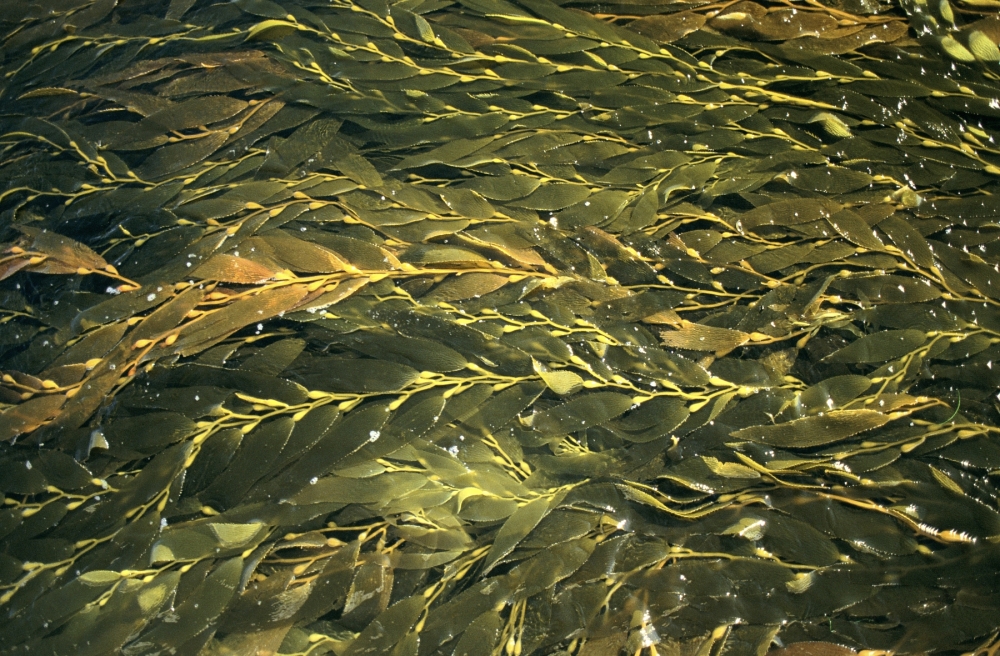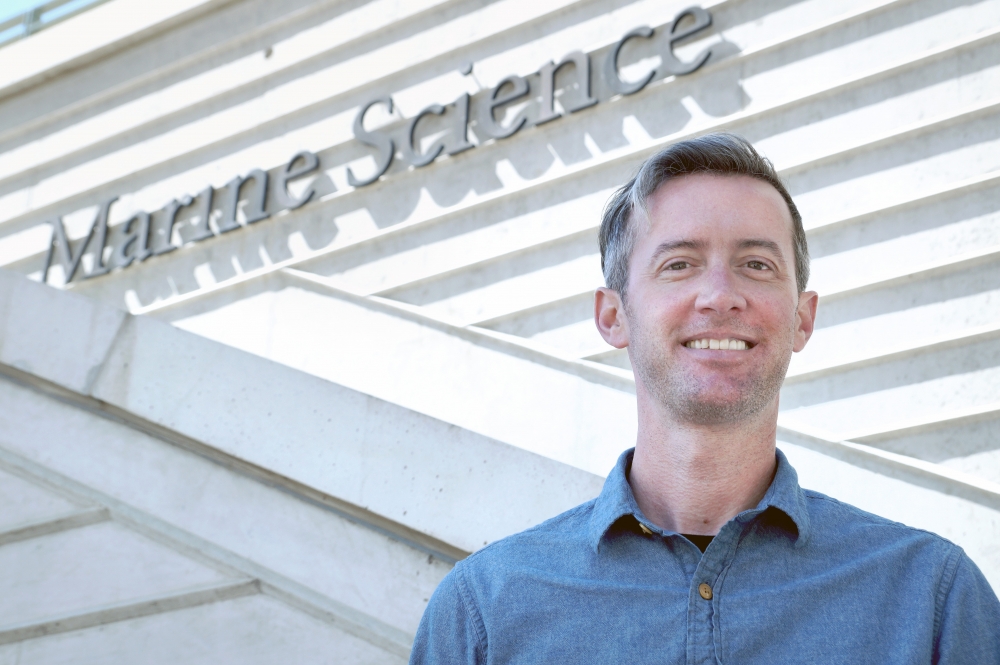
A Steady Diet?

One of the fastest-growing organisms on Earth, giant kelp can grow 2 feet a day and reach up to 148 feet long in a single season, fueled by a diet of dissolved nitrogen. Curiously, nitrate — among the main forms of nitrogen — is scarce in the summer and fall, yet the kelp continues to grow year-round.
Researchers from the National Science Foundation’s Santa Barbara Coastal Long Term Ecological Research (SBC LTER) project at UC Santa Barbara wanted to determine how Macrocystis pyrifera maintains its impressive growth when nitrate all but disappears. They discovered that the kelp also uses another simple form of dissolved nitrogen: urea, found in abundance in coastal upwelling zones such as the Santa Barbara Channel. Details of the findings appear in the journal Limnology and Oceanography Letters.
“First, we looked at another kind of nitrogen, ammonium, but its presence wasn’t able to explain the full amount of growth we were seeing in the summer,” explained lead author Jason Smith, a postdoctoral scholar at UCSB’s Marine Science Institute (MSI). “Urea is a common fertilizer so it’s in runoff, but there are natural sources as well.”
When the scientists measured urea in the ocean, they found it to be consistently present year-round. They also found that concentrations tended to be higher than those of ammonium and nitrate during summer.
Smith and his colleagues conducted physiological experiments both on giant kelp in the field and on the blades they brought back to the laboratory. They tested whether the seaweed was able to use urea and compared those utilization rates to ammonium and nitrate, the only sources that kelp was known to use.
“It turned out that kelp consistently showed no preference and used urea at equal rates as ammonium, which is the preferred substrate for most plants,” Smith said. “Our results suggest that there’s enough urea available to sustain kelp growth when levels of ammonium and nitrate are low.”
However, calculating a rate of utilization for these different compounds only provided half the answer. The way that urea is processed in the environment means that it has the potential to be broken down into components that the kelp could consume, which, Smith noted, would not be a physiological advancement.
“We performed a set of controlled experiments on kelp tissue to prove that the urea molecule itself enters the tissue,” Smith said. “We were the first to document for any seaweed that the whole urea molecule is consumed, which greatly expands the known physiology of giant kelp and the kinds of nitrogen forms the plant can use. Given that we know urea has a persistent presence in the coastal ocean — not only off the coast of California but in many coastal oceans globally — this provides a new resource to explain seaweed growth in many other places.”
The research also helps answer another question: why phytoplankton growth declined during the 2013-16 El Niño. Less nitrogen available in the warmer surface water diminished phytoplankton growth, while giant kelp growth was steady, thanks to urea as a nutrient source.
“Knowing that giant kelp uses urea, and that urea is decoupled from the availability of nitrate in the ocean, gives scientists a way to understand the potential reasons why kelp growth seems to differ from that of phytoplankton, whose growth is considered the pulse of ocean health and function,” said co-author Dan Reed, a research biologist with MSI and a principal investigator of the SBC LTER.
“This report provides an explanation for how giant kelp in Southern California is able to persist and grow when nitrate concentrations in coastal waters are extremely low,” said David Garrison, a director of the NSF’s Long Term Ecological Research program, which funded the study.
Going forward, members of the SBC LTER would like to better understand how the various forms of nitrogen are partitioning between kelp and phytoplankton.
“Long-term monitoring is essential to understanding the availability of urea relative to nitrate and these other known nitrogen forms as the ocean changes,” Smith said. “If urea is totally decoupled from nitrate all the time, then reductions in nitrate caused by ocean warming may not have the same effects on giant kelp growth as they are predicted to have on phytoplankton.”



